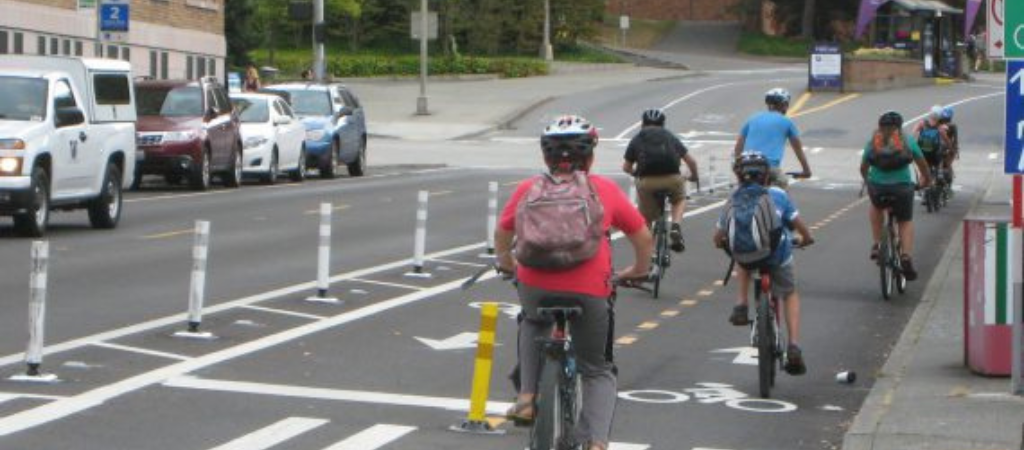How local governments can overcome delay and obstruction (part two)
Local government practitioners are often highly motivated to invest in safer street designs. But they soon encounter insurmountable barriers from the state DOT, which holds the purse strings, owns the roads and highways that also serve as local streets, and interprets federal rules in ways that elevate their priorities and push safety down the list. Here are some ways for local elected officials and municipal staff to break through those barriers.

In the first installment of this series, we explored ways local advocates can overcome some of the barriers frequently thrown up by local government practitioners focused on preserving the status quo. But in many places, the local elected leaders or practitioners want to do the right thing but are stymied by state DOTs and even federal regulations.
Here are some of the obstructions that local planners and engineers often encounter with their state DOT and even federal agencies like the Federal Highway Administration (FHWA), and how they can respond to move toward real solutions that go beyond the status quo of dangerous fast streets that fail to prioritize and accommodate people walking, biking and riding public transit.
1) “We allow plenty of innovative designs, but federal rules don’t allow what you’ve submitted.”
State DOTs often (and often incorrectly) interpret federal rules in ways that make it more difficult for local jurisdictions to use federal funding. There are two steps to overcoming this issue. First, ask the state DOT rep to show you the language in federal code that prohibits your proposed design. Both US Code and the Code of Federal Regulations are available online as are most state codes, so you can look at what they send and see if the code actually says what they say it says. (Or ask an outside expert to weigh in.)
If they do produce language, but the interpretation is questionable, you can start thinking about going above them. If this is a state DOT engineer’s interpretation, ask the agency’s policy team and/or legal team to provide an opinion on interpretation. Even if this doesn’t change the state DOT stance, it will shine light on the agency’s thinking (and if state rules are influencing the interpretation), thus informing future conversations.
If the state DOT stance hasn’t changed to your satisfaction, you can choose to involve FHWA. Ask for a joint meeting with the state DOT rep and your local FHWA regional representative. (As we noted in the first post about localities, states very often claim things about federal standards that are patently untrue.) It can also be productive and helpful to develop a relationship with someone in the national USDOT office.
While these steps can help get your project done, it still may involve additional work and expense like applying for exceptions. For example, state standards often require car lanes to be 11 feet wide or more, even though 10-foot lanes are often adequate and can even help slow traffic, making a road safer. If engineers have to file for an exception every time they need to shrink the lanes to fit in bike lanes or sidewalks, they are in effect being punished for doing the right thing.
When you explain the burden of applying for exceptions, the state agency may say:
2) “We can provide you with examples of best practices for how to apply for exceptions and/or make designs comply with unwieldy requirements.”
The main counter argument here is that the fact that just because some people somewhere figured it out does not mean that it is easy for others to do so. And it is usually very hard.
That point aside, standards should be flexible enough to allow slow-speed designs by right, and should catch up to the most innovative designs for safe and protected bike and pedestrian infrastructure, so that practitioners doing the best designs aren’t forced to take extra steps. The safest, best designs should face the least bureaucratic obstruction, not the most. Wider lanes and designs that prioritize speed first should require the exceptions—if at all—not the other way around.
So they say…
3) “We can publish guidance explaining why people can use the street design element you are proposing.”
This of course does very little to defray the difficulty and expense of having to jump through hoops to do the right thing. Doing the right thing should be easier and the default way of operating, rather than the exception.
When you explain the cost and difficulty of applying for exceptions, this often leads back in a circle to 1) but with the addition of:
4) “Oh, we can’t afford to do that.”
Again, ask them to show you where in the rules and regulations it is written that what you are proposing is not allowed. Ask them to cite the specific text and provide links to its location. Put the burden on them to show their work in a way that can be examined. This is a step where involving USDOT or a local FHWA office in the discussion may again become important, and where engaging not just the local office, but the national office (or outside experts or advocates like T4America) may be relevant.
This could be a good time to go above the staff to the governor who is ultimately their boss, especially if they are claiming that funding is part of the issue. Your city council members or mayor may want to be a part of that conversation. Elected leaders determine budgets based on what they see, and can redirect the process and/or adjust the budget in future cycles.
We shouldn’t allow red-tape, real or imagined, to stop us from building the best possible transportation networks that fully serve everyone in our communities. Hopefully this short series will help everyone sharpen their scissors. Good luck to us all!
Want to see how advocates can overcome delay and obstruction? Visit part one of this series for more useful tips.



















